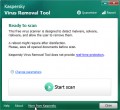If your antivirus detects Trojan:Win32/Fuery.A!cl then it indicates that your computer is infected with a previously unknown malicious software. This unwanted software usually come with some freeware or from malicious websites that ask users to download and run a Flash Player or Java update. Once started, the Trojan:Win32/Fuery.A!cl will be configured to start automatically when Windows starts. The unwanted software may display large number unwanted popups, inject ads into web-pages that you are opening in the Internet browser, hijack the web-browser’s settings such as homepage and search engine, and so on.
Common symptoms of Trojan:Win32/Fuery.A!cl
If you still are not sure that your computer is infected with this parasite, then check your computer for the common symptoms of the infection:
- Your browser displays banner ads where previously you have never seen
- Google Chrome, Mozilla Firefox and Microsoft Internet Explorer (Edge) shows a lot of annoying advertisements
- Internet browser’s settings such as homepage and default search engine are hijacked
- Your an antivirus or antispyware software detects an infection
- Internet connection may be slow
How to remove Trojan:Win32/Fuery.A!cl
The Win32/Fuery.A!cl is a trojan horse virus that you might have difficulty in uninstalling it from your computer. Happily, you have found the effective removal guide in this post. If you’ve any questions or need assist then type a comment below. Certain of the steps below will require you to close the web-page. So, please read the step-by-step guide carefully, after that bookmark or print it for later reference.
- Scan your computer with MalwareBytes Anti-malware
- Remove Win32/Fuery.A!cl with Zemana Anti-malware
- Scan your computer with Kaspersky Virus Removal Tool
- Disinfect browser’s shortcuts
- Reset web-browser’s settings
- Protect your computer from annoying ads and malicious sites
Scan your computer with MalwareBytes Anti-malware
You can remove Win32/Fuery.A!cl automatically with a help of Malwarebytes Free. We suggest this free malware removal utility because it can easily remove hijackers, ad supported software, potentially unwanted programs and toolbars with all their components such as files, folders and registry entries.
Download Malwarebytes from the link below.
327265 downloads
Author: Malwarebytes
Category: Security tools
Update: April 15, 2020
When the download is finished, close all software and windows on your computer. Open a directory in which you saved it. Double-click on the icon that’s named mb3-setup as shown in the figure below.
![]()
When the installation starts, you will see the “Setup wizard” that will help you install Malwarebytes on your computer.
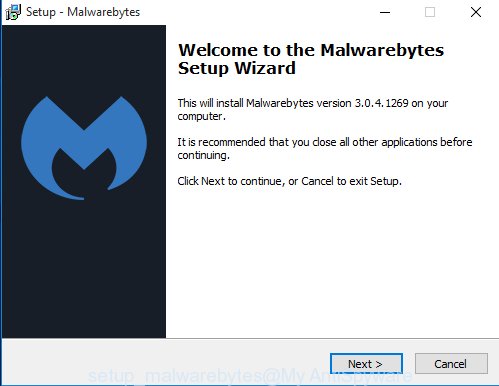
Once installation is complete, you will see window as shown below.
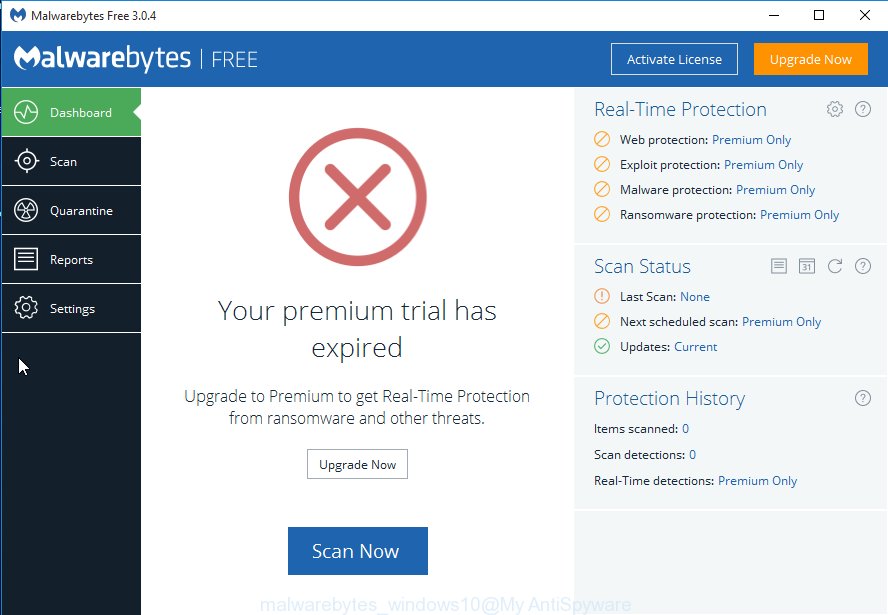
Now press the “Scan Now” button to perform a system scan for Trojan:Win32/Fuery.A!cl and other malware and adware. A system scan can take anywhere from 5 to 30 minutes, depending on your PC system. When a threat is detected, the number of the security threats will change accordingly.
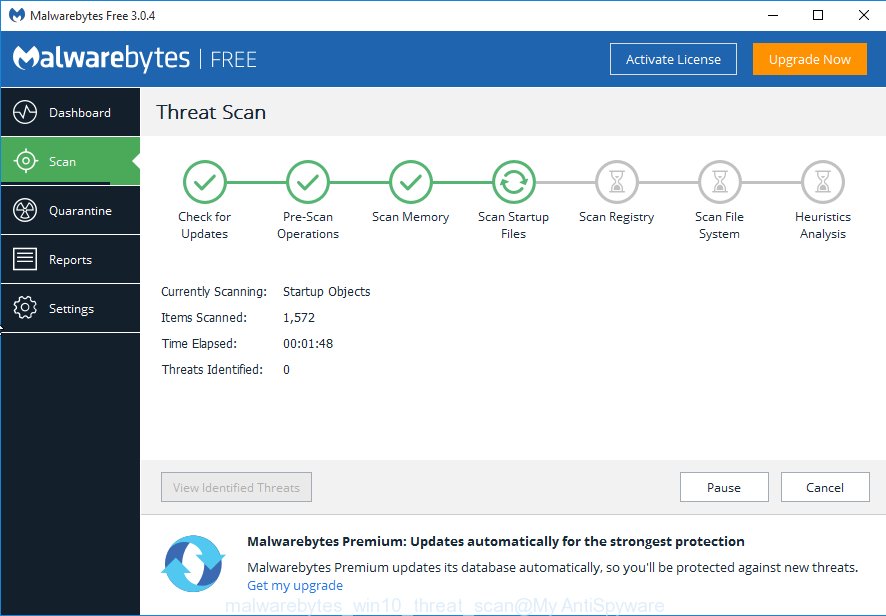
When it completes the scan, the results are displayed in the scan report. Review the scan results and then press “Quarantine Selected” button.
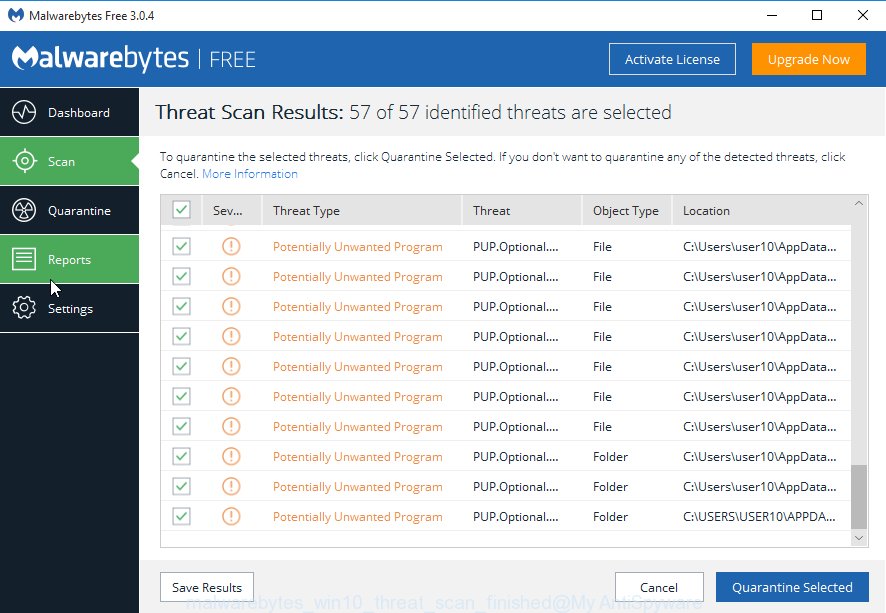
The Malwarebytes will begin removing Trojan:Win32/Fuery.A!cl related files, folders, registry keys. Once disinfection is done, you may be prompted to reboot your PC system.
The following video explains steps on how to remove browser hijacker with Malwarebytes Anti-malware.
How to remove Win32/Fuery.A!cl with Zemana Anti-malware
We suggest using the Zemana Anti-malware. You can download and install Zemana Anti-malware to detect and get rid of Trojan:Win32/Fuery.A!cl from your personal computer. When installed and updated, the malicious software remover will automatically scan and detect all threats exist on the system.
Download Zemana anti-malware from the link below.
165036 downloads
Author: Zemana Ltd
Category: Security tools
Update: July 16, 2019
Once downloading is complete, start it and follow the prompts. Once installed, the Zemana anti malware will try to update itself and when this task is finished, press the “Scan” button for checking your machine for the Trojan:Win32/Fuery.A!cl and other malicious software.
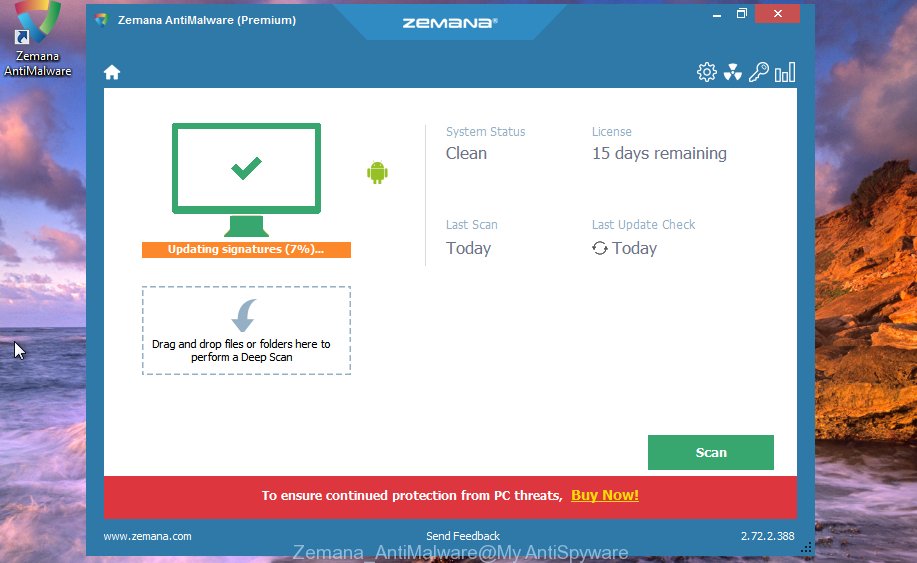
A system scan can take anywhere from 5 to 30 minutes, depending on your personal computer. When a malware, adware or potentially unwanted applications are found, the number of the security threats will change accordingly. Make sure all entries have ‘checkmark’ and press “Next” button.
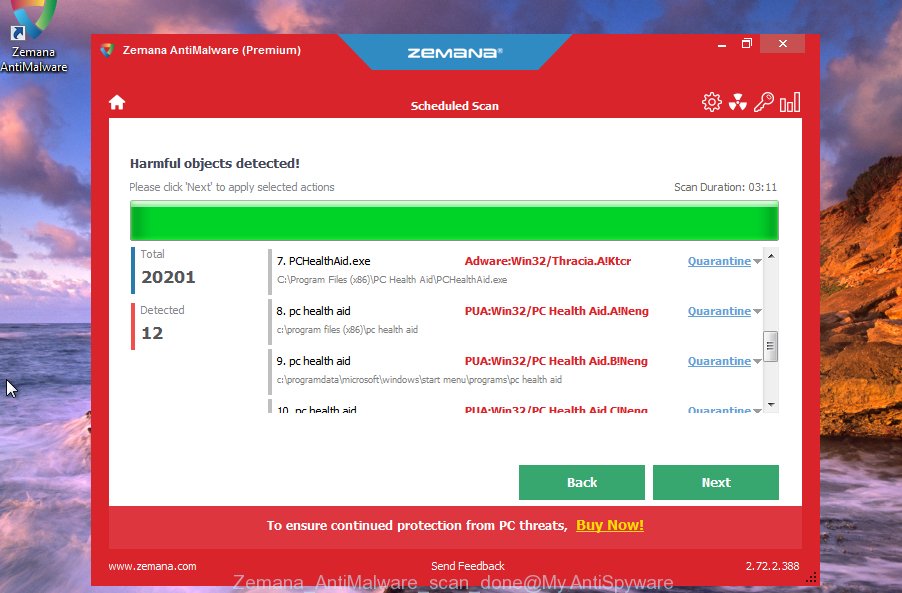
The Zemana anti malware will begin removing all detected folders, files, services and registry entries.
Scan your computer with Kaspersky virus removal tool
Kaspersky virus removal tool is a well-known free security tool. It uses the Kaspersky Anti-Virus engine to detect and remove viruses, trojans and malware.
- Download Kaspersky virus removal tool from the following link and save it directly to your Windows Desktop.
Kaspersky virus removal tool
129294 downloads
Author: Kaspersky® lab
Category: Security tools
Update: March 5, 2018
- Double-click on the KVRT icon found on your desktop. Once initialization process is finished, you will see the Kaspersky virus removal tool screen.
- Click Change Parameters and set a check near all your drives. Click OK to close the Parameters window.
- Press Start scan button. Kaspersky virus removal tool will now start scanning your computer for known infections. This procedure can take some time, so please be patient.
- When KVRT has finished scanning, click on Continue to start a cleaning process.
Disinfect browser’s shortcuts
Once installed, this trojan may add an argument similar “http://site.address” into the Target property of the desktop shortcut for the Firefox, Google Chrome, Internet Explorer and Microsoft Edge. Due to this, every time you run the internet browser, it will open an unwanted page.
Right click on the internet browser’s shortcut, click Properties option. On the Shortcut tab, locate the Target field. Click inside, you will see a vertical line – arrow pointer, move it (using -> arrow key on your keyboard) to the right as possible. You will see a text “http://site.address” that has been added here. Remove everything after .exe. An example, for Google Chrome you should remove everything after chrome.exe.

To save changes, click OK . You need to clean all internet browser’s shortcuts. So, repeat this step for the Chrome, IE, Firefox and Microsoft Edge.
Reset web-browser’s settings
Chrome
Reset Chrome settings is a simple way to remove the browser hijacker, harmful and ‘ad-supported’ extensions, as well as to restore the web browser’s new tab page, startpage and search engine by default that have been replaced by Trojan.
Open the Google Chrome menu by clicking on the button in the form of three horizontal stripes (![]() ). It will show the drop-down menu. Next, click to “Settings” option.
). It will show the drop-down menu. Next, click to “Settings” option.

Scroll down to the bottom of the page and click on the “Show advanced settings” link. Now scroll down until the Reset settings section is visible, as shown on the image below and click the “Reset settings” button.
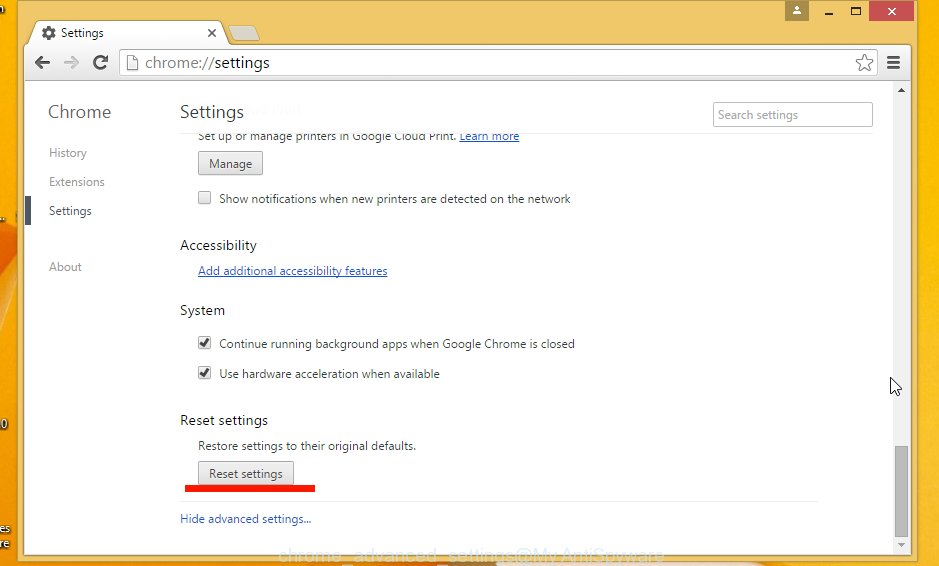
Confirm your action, click the “Reset” button.
Firefox
The Firefox reset will keep your personal information such as bookmarks, passwords, web form auto-fill data and remove unwanted search engine and startpage, modified preferences, extensions and security settings.
First, start the Firefox and click ![]() button. It will display the drop-down menu on the right-part of the web browser. Further, press the Help button (
button. It will display the drop-down menu on the right-part of the web browser. Further, press the Help button (![]() ) as shown on the screen below
) as shown on the screen below
.

In the Help menu, select the “Troubleshooting Information” option. Another way to open the “Troubleshooting Information” screen – type “about:support” in the internet browser adress bar and press Enter. It will display the “Troubleshooting Information” page as shown on the image below. In the upper-right corner of this screen, press the “Refresh Firefox” button.

It will display the confirmation prompt. Further, press the “Refresh Firefox” button. The FF will start a process to fix your problems that caused by the Trojan:Win32/Fuery.A!cl. Once, it’s done, press the “Finish” button.
Internet Explorer
If you find that IE browser settings like home page, new tab and default search provider having been hijacked, then you may restore your settings, via the reset browser procedure.
First, run the Internet Explorer. Next, click the button in the form of gear (![]() ). It will display the Tools drop-down menu, click the “Internet Options” as shown on the image below.
). It will display the Tools drop-down menu, click the “Internet Options” as shown on the image below.

In the “Internet Options” window click on the Advanced tab, then click the Reset button. The Microsoft Internet Explorer will open the “Reset Internet Explorer settings” window as shown in the figure below. Select the “Delete personal settings” check box, then press “Reset” button.

You will now need to restart your computer for the changes to take effect.
Protect your computer from annoying ads and malicious sites
It is important to run ad-blocking programs such as AdGuard to protect your computer from malicious sites. Most security experts says that it’s okay to block advertisements. You should do so just to stay safe!
Installing the AdGuard adblocker application is simple. First you will need to download AdGuard from the following link.
26898 downloads
Version: 6.4
Author: © Adguard
Category: Security tools
Update: November 15, 2018
Once the download is finished, double-click the downloaded file to start it. The “Setup Wizard” window will show up on the computer screen as shown in the figure below.
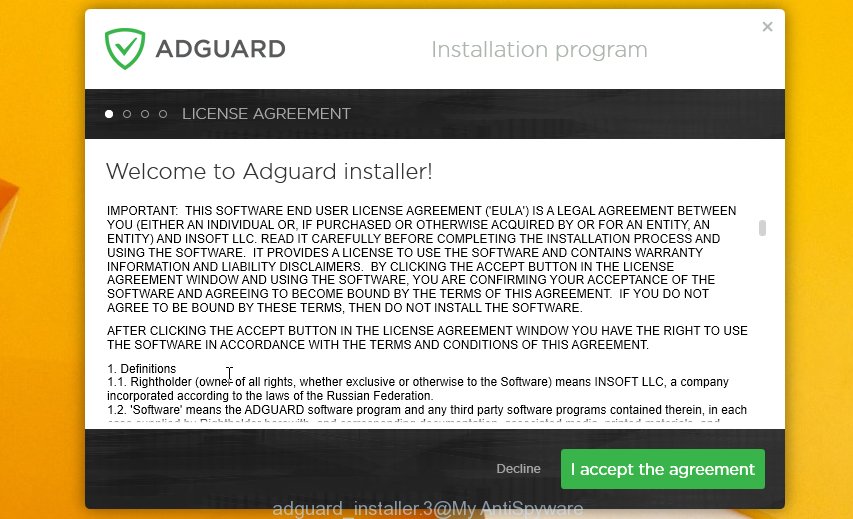
Follow the prompts. AdGuard will then be installed and an icon will be placed on your desktop. A window will show up asking you to confirm that you want to see a quick guidance as shown below.

Press “Skip” button to close the window and use the default settings, or press “Get Started” to see an quick guide that will assist you get to know AdGuard better.
Each time, when you start your system, AdGuard will launch automatically and block ads, unwanted pop-ups, as well as other harmful or misleading web pages. For an overview of all the features of the program, or to change its settings you can simply double-click on the AdGuard icon, which is located on your desktop.
To sum up
Now your PC system should be clean of the Win32/Fuery.A!cl. We suggest that you keep AdGuard (to help you block unwanted pop up ads and undesired dangerous sites) and Malwarebytes (to periodically scan your computer for new malware, browser hijackers and adware). Make sure that you have all the Critical Updates recommended for Windows OS. Without regular updates you WILL NOT be protected when new browser hijacker, malicious software and adware are released.
If you are still having problems while trying to remove Trojan redirect from your internet browser, then ask for help in our Spyware/Malware removal forum.

